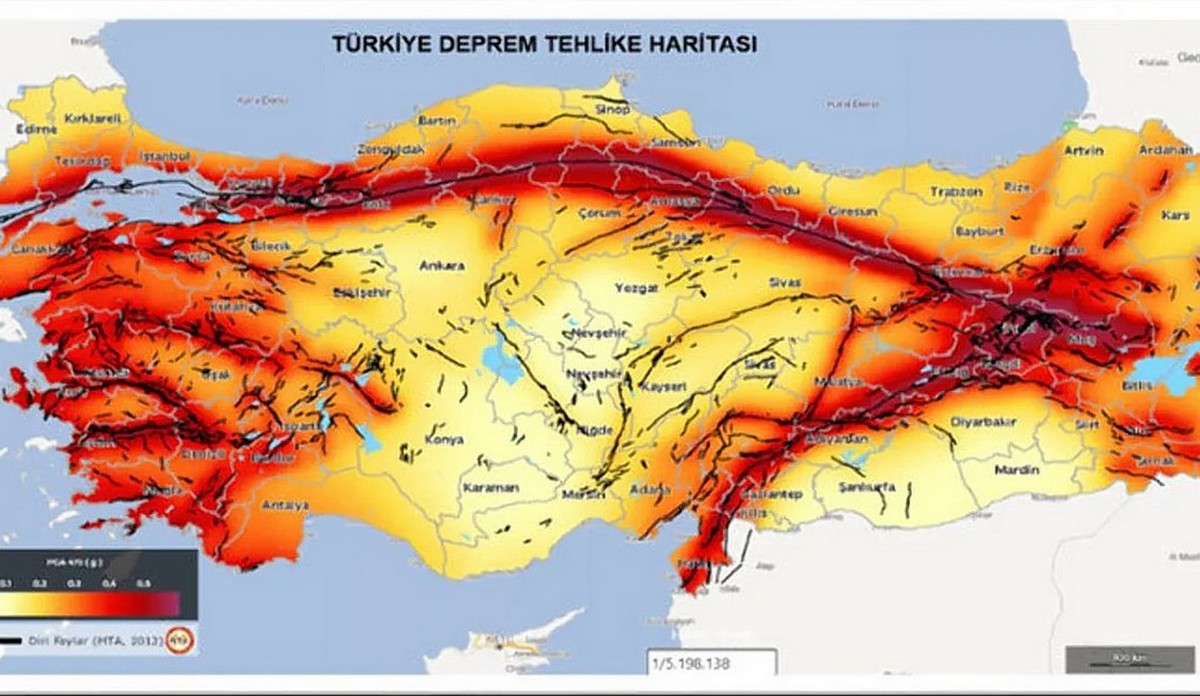After the tragic events in Turkey – Monday’s two strongest earthquakes in nearly 100 years – and seismologists’ predictions to follow, it’s no wonder tourists are asking where the underground element will strike next in 2023. Unfortunately, there is nothing to please tourists. The Turkish newspaper Hurriyet published a map of seismically dangerous regions of Turkey. And unfortunately, most of the resort provinces are in a zone of direct or indirect danger. In general, a fault line runs through the whole of Turkey, where different tectonic plates collide.
In general, there are three main seismic hazard zones in Turkey, the so-called fault lines: the North Anatolian Fault Line, the East Anatolian Fault Line, and the West Anatolian Fault Line. The closer to the fault zone, the greater the level of seismic danger.
Unfortunately, a significant part of tourist provinces is precisely in the risk zone. For example, Antalya, the most popular among our tourists, is located in the “yellow” zone, the second most dangerous. Like Istanbul, by the way. Although Istanbul is still in a more dangerous situation. Such popular resorts as İzmir and Mugla were dangerously close to the tectonic fault. At the same time, being on the coast only adds risk factors, such as, tsunamis.
It will be recalled that early on Monday morning a natural disaster struck Turkey: a terrible earthquake, the strongest in the last 20 years. The magnitude of the earthquake was 7.4 points, which is a lot, and the “echoes” of underground tremors were felt in more than 10 countries. At the same time, according to the Turkish Agency for Combating Natural Disasters and Emergency Situations (AFAD), an earthquake with a magnitude of 7.4 occurred at 04:17 in the Pazardzhik district of Kahramanmaras. It was followed almost immediately, at 04:26, by another earthquake with a magnitude of 6.4, the epicenter of which is located in the Nurdagh district of Gaziantep near the Turkish-Syrian border. Aftershocks were felt throughout Turkey, up to the resort provinces. The situation was aggravated by the fact that the earthquake struck early in the morning when people were still sleeping, so the previous number of dead and injured continued to rise. Read details here.
Then another earthquake occurred at 13:23 and the magnitude of the earthquake was registered as 7.8, the epicenter is Elbistan district of Kahramanmarash province,” they say. It is also reported that new aftershocks are felt in Damascus, Latakia, and several other provinces of Syria. And also in the capital of Turkey, Ankara, and its main resort, Antalya.
At the same time, experts are not encouraging: about a year ago, Professor Hvalun Ahmet Ercan, a well-known earthquake forecasting expert in Turkey, said that 2023 will be a risky year for Turkey in terms of earthquakes. He also called Istanbul a dangerous place. “Because 2020, 2021, 2022, and even 2023 will be the years of earthquakes in Turkey. One of the main sources of this is the shifts of the tectonic plate, the fault of which runs through the territory of Turkey. And this movement accumulates tremendous energy, which is released in the form of earthquakes. “During the Geldzhuk earthquake in 1999, energy equivalent to 132 atomic bombs was released, draining much of the Marmara’s voltage. Later, an earthquake occurred in Duzhe. As a result, the tension of the earth’s crust in this region was removed,” the professor said.
“22 years have passed since that moment, and tensions have become critical again. This means that an earthquake as an output of displacement energy can occur at any moment. And after 2035, it is generally necessary to sound the alarm: a risky period will begin after 2045, and Istanbul will be hit hard, which can destroy the city,” the scientist explained.

